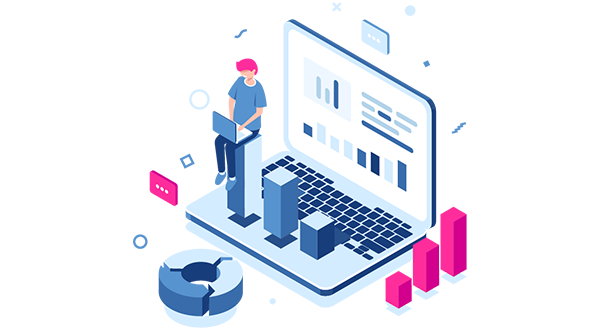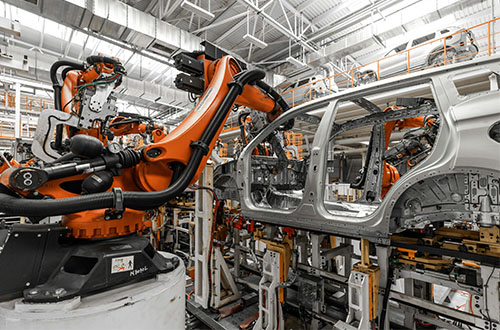

mLogica Thought Leaders: Successful Mainframe Modernization Projects Start with an Expert Assessment

The mLogica Mainframe Modernization Team
The future of mainframe modernization is centered around migrating legacy environments to the cloud. While mainframe systems have been the backbone of large-scale enterprises for decades, cloud computing offers a range of benefits that can dramatically enhance functionality, scalability and cost-effectiveness. By migrating mainframe workloads to the cloud, organizations can also take advantage of modern technology such as artificial intelligence (AI), machine learning (ML), big data analytics and the ever-widening internet of things (IoT).
Why Expert Assessments are Critical
For a mainframe modernization initiative to be successful, organizations need an expert, comprehensive assessment of their existing mainframe environments, including a thorough analysis of their entire application portfolio. This allows the IT team to determine the complexity, criticality, interdependencies and suitability of each application for cloud migration and to develop a detailed migration strategy.
This assessment must include analysis of all aspects of the mainframe environment and its components to determine any potential challenges and opportunities involved. In addition, understanding the business goals and drivers behind the migration initiative helps in aligning the technical assessment with an organization's overall strategic goals.
Outsmarting “The Last Mile Challenge”
One of the most critical deliverables of a comprehensive assessment is a complete inventory of all legacy technologies within the current system. In fact, the reason most modernization projects stall is because the migration team lacks data on all technologies and therefore neglects to migrate them correctly, leading to project failure.
COBOL, CICS, VSAM and Db2 databases are typically the largest, most top-of-mind components of mainframe systems. However, addressing only these technologies, while neglecting to address and correctly migrate mission-critical supporting languages such as Assembler, Easytrieve, Telon and PL/1, plus databases like IMS and IDMS, virtually guarantees project failure. This scenario has become so common that at mLogica we’ve dubbed it The Last Mile Challenge.
Since this outcome occurs so frequently, as part of our LIBER*M Mainframe Modernization Suite mLogica offers two modules custom-designed to address this issue:
LIBER*DAHLIA
Our automated discovery module, LIBER*DAHLIA is engineered to perform highly detailed, targeted assessments of the entire legacy application environment.
LIBER*TULIP
LIBER*TULIP delivers automated code refactoring of legacy applications including COBOL, Easytrieve, PL/I and Assembler to Java, C#, C++ and other modern languages.
Why is Assessment Critical to Determining Your Cloud Migration Options?
A comprehensive modernization assessment can fully reveal all existing databases, applications and underlying components, as well as all their up- and downstream dependencies. Only such an analysis can provide full visibility into the most seamless, cost-efficient and future-oriented options for your organization, whether your goal is full migration or is more limited in scope. These options can include:
Encapsulation
Leveraging and extending the features of your existing applications by encapsulating their data and functions, making them available as microservices via an API
Rehosting
Redeployment of application components to other infrastructure, i.e. physical or virtual, without modifying their code, features or functions
Replatforming
Migration to a new runtime platform, making minimal changes to the code, but not its structure, features or functions
Refactoring
Restructuring and optimizing the existing code, although not its external behavior, to remove technical debt and improve nonfunctional attributes
Rearchitecting
Materially altering the code to shift it to a new application architecture, thereby gaining significantly enhanced capabilities
Rebuilding
Redesigning or rewriting the application components from scratch while preserving their scope and specifications
Replacement
Eliminating an existing legacy application and replacing it with a more modern option, with an eye to new business requirements and potentially updated features
Clearly Defined Project Costs and Risks
Comprehensive mainframe migration assessments also include a detailed estimate of the costs involved, including infrastructure changes, application reengineering, data migration, training and ongoing maintenance. This is vital in order to gauge the financial expenditure required, as well as establishing the timeframe for return on investment and time to value.
In addition, it’s critical to provide a full analysis of all potential risks, including downtime, data loss, security vulnerabilities and performance impacts, so that risk mitigation strategies are implemented proactively to minimize any issues. Of course, the two most effective strategies to mitigate risk are employing an experienced modernization partner with proven methodology, and the deployment of automated migration tools that cut transition timelines while virtually eliminating human error.
Determining the Right Cloud Platform for Your Current and Future Needs
A comprehensive pre-migration assessment also includes analysis and recommendations regarding the optimal target cloud platform for your business needs. Factors that must be considered include security and performance requirements, technical dependencies and the services and applications offered by each provider.
Determining the optimal destination cloud environment also depends on factors such as the complexity of the existing mainframe environment, the customer’s desired level of control and the pool of available expert resources within the organization. A comprehensive assessment offers an unbiased evaluation of the features, pricing, performance and support offered by different cloud service providers to determine the best fit for the individual customer.
Security and Compliance in the New Environment
It’s also critical to fully understand the security and compliance protocols associated with your existing mainframe environment, as well as future requirements. An expert assessment will identify all security controls, encryption needs, access restrictions and regulatory compliance requirements to ensure the target cloud environment will meet current and future business needs.
In addition, if the existing mainframe environment has critical dependencies on other on-premise systems or sensitive data that cannot be migrated to the cloud, a hybrid cloud approach can also be adopted. In this scenario, certain components of your mainframe workload can be hosted in the cloud, to enhance agility and cost-efficiency, while others remain on-premise, allowing for seamless integration and data exchange.
Expert Assessments Drive Successful Mainframe Modernizations and Cloud Migrations
A comprehensive mainframe migration assessment, one which encompasses both technical and business requirements, will deliver a recommended modernization approach, a realistic timeline, all resource and security requirements as well as best-practice testing methodologies to ensure a seamless transition. Leveraging these detailed summaries and roadmaps, organizations can accurately evaluate their overall readiness for migration and assess any skills gaps, training needs and resource availability issues.
By conducting a thorough mainframe migration assessment, organizations gain full visibility into the complexities and benefits of moving from their mainframe system to modern cloud architecture. This helps them make informed decisions, develop an effective migration strategy and minimize any risks for a successful and optimized transition.








































